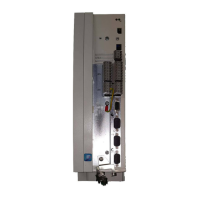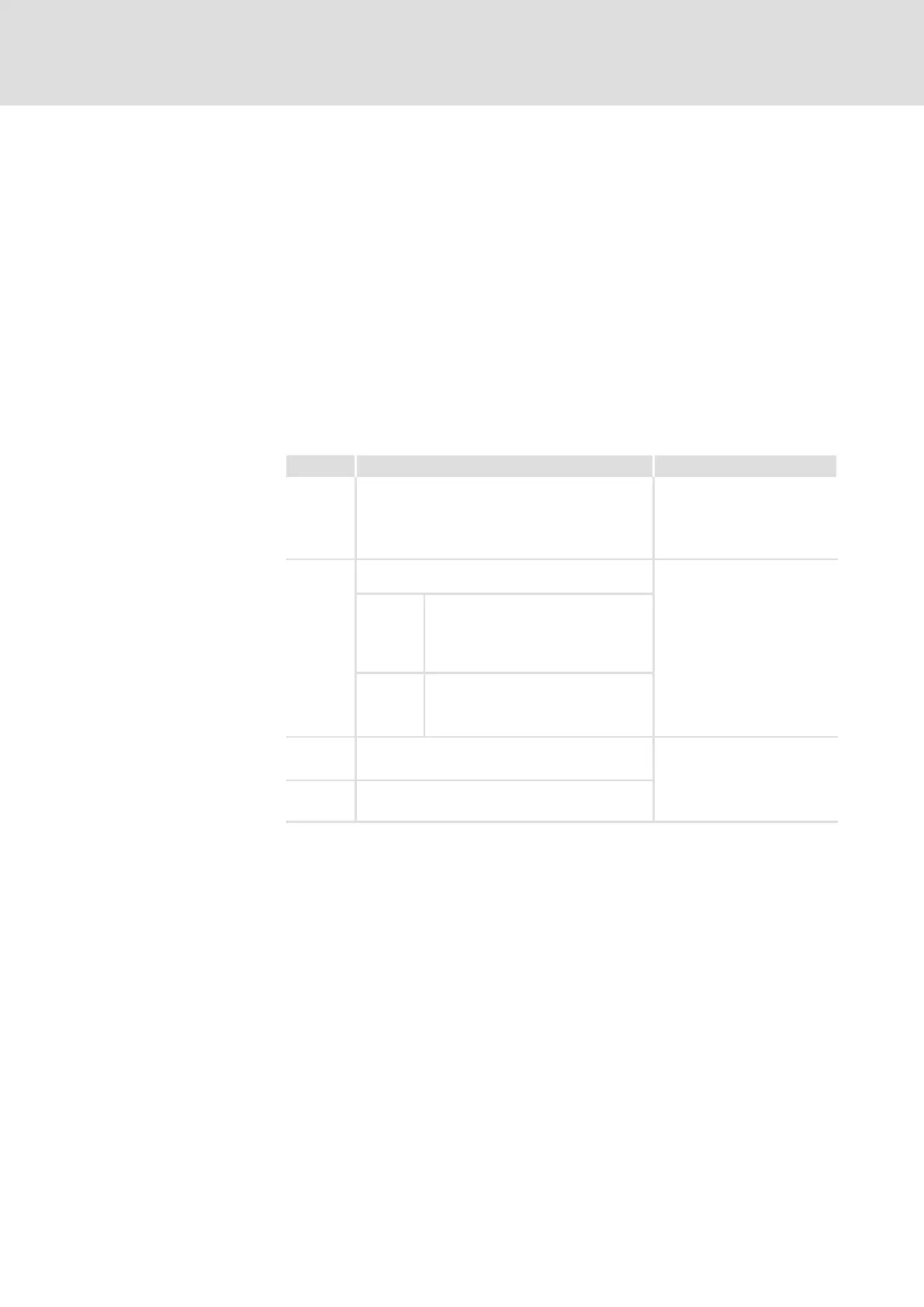Configuration
Monitoring
Fault responses
8
8.3
8.3.1
8.3−1
EDSVF9383V EN 7.1−04/2012
8.3 Monitoring
Various monitoring functions ( 8.4−1) protect the drive system against
impermissible operating conditions.
If a monitoring function responds,
ƒ the set fault response is triggered to protect the drive and
ƒ the fault message is entered at position 1 in the fault history buffer
(C4168/x) ( 9.2−1).
8.3.1 Fault responses
Depending on the failure, one or more of the following responses are
possible:
Response Effects on the drive and controller Danger warnings
TRIP
(highest
priority)
l Switches the power outputs U, V, W to a high
resistance until TRIP is reset
l The drive coasts (no control!).
l After TRIP reset, the drive accelerates to its
setpoint on the ramps set.
Message
Switches the power outputs U, V, W to a high
resistance as long as the message is active.
Danger!
The drive restarts
automatically if the message
is no longer available.
l Short−
time
messa
ge
£ 0.5 s
The drive coasts (no control) as long as
the message is active.
If the message is no longer available,
the drive accelerates to its setpoint
with maximum torque.
l Longer
messa
ge
> 0.5 s
The drive coasts (due to internal
controller inhibit) as long as the
message is active.
If required, restart the drive.
Warning l Only display of the failure.
l The drive operates in a controlled manner.
Stop!
As these responses have no
effect on the drive behaviour,
the drive can be destroyed.
Off l No response on failures! Monitoring is
deactivated.

